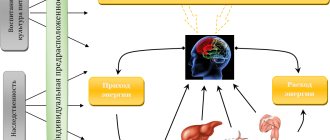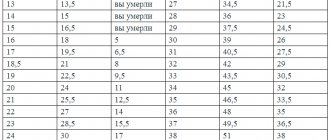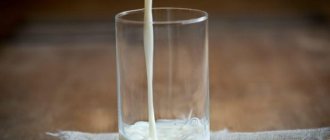Fat distribution
Everyone has their own characteristics of the body and organism, including the distribution of fat deposits. So, some women have a small amount of fat on their abdomen, but excess fat in the triceps and thighs. For others it's the other way around. As for men, in most cases, fat deposits are mainly observed in the abdominal area. The pictures clearly show in which parts fat is most often deposited in females and males.
Body fat percentage: male body
3-4%
This percentage of fat content is typical for bodybuilders during preparation for sports competitions. In this case, increased vascularity is observed - veins are visible on almost every muscle. Even the muscles on the buttocks have small gaps, and the absence of them indicates a very low fat content. The norm for men is considered to be about 2% fat content. This is the amount necessary for the body to function normally, since fat protects the organs in the abdominal cavity and thoracic region.
6-7%
This indicator is not as categorical as the previous one, but it is still not normal for most representatives of the strong field. The fact is that this is reflected in the appearance, for example, the face looks emaciated, which causes concern among people around. This percentage of fat content is typical for most models; their muscles are clearly defined, and there is clear vascularity, including the muscles of the limbs and abdomen. When the abdominal muscles are clearly visible, the muscles are clearly separated - this indicates low fat content.
10-12%
This is a normal level for a man. Of course, the abdominal muscles are not as clearly visible as in the previous case, but the abdominal muscles are clearly visible. This is exactly the condition and body shape that most men strive for. He is also considered attractive by the fair sex. This percentage of fat is characterized by grooves only in the arms and shoulders, and not in every muscle.
15%
This level corresponds to men with a fit and slender figure. The contours of the muscles are clearly visible, but there is no visible separation between them. Typically, the grooves are covered with a small amount of fat. However, this does not negatively affect the shape of the body - the figure is beautiful, despite the fact that there is no obvious muscle definition.
20%
This level of fat content is characterized by not very clear identification of muscles and blood vessels. In most cases, men develop a small belly. For example, the male population of New York City generally has a body fat level of 20-25%. But in other places this figure may differ. As a rule, a man with a height of 180 cm and a body weight of 81 kg has a body fat content of about 20% fat.
25%
In this case, there is a significant increase in waist size, muscles and blood vessels are practically not visible. If a man is 180cm tall, his minimum waist size can reach 91cm. Also, this percentage of fat content is characterized by a slight increase in neck volume and small fat folds. But all this is perfectly hidden by clothes. Men who have a higher level of fat than this point are faced with the problem of obesity. Abdominal obesity is recognized if the waist circumference exceeds 101 cm.
30%
This indicator is characterized by the distribution of fat throughout the body, including the formation of fat deposits in the waist, hips, back, and calves. Visually, the waist looks larger than the hips, the muscles are not visible at all, and the stomach sags.
35%
When body weight constantly increases, the amount of fat also increases, more of which accumulates in the abdominal area. At this level, an even more saggy belly is observed, the waist as such disappears completely (its volume can exceed 101 cm). This type of belly is called a “beer belly.”
40%
As in the previous case, fat deposits are concentrated in the waist and abdominal area. Waist size can exceed 145cm. With this indicator, a person faces a number of problems with movement, especially on stairs. It's difficult to bend over. These are the first signs of obesity!
Myth of the year: “muscle burns much more calories than fat”
This is probably one of the most popular myths in the world, which is often mentioned when they say that strength training is better and more important than aerobic training.
All these statements like “muscle burns more calories than fat, even when you’re just sitting”, “muscle helps you burn more calories because... the body spends a lot of energy on their maintenance,” you’ve probably heard millions of times and we think you completely trusted them.
Don't get us wrong, we are in no way against strength training, and certainly not against our beloved barbells and dumbbells. But we will not allow you to deceive our readers!
Let's figure out where the truth is and where there are lies and myths.
In general, of course, there is some truth in the theory that muscles burn more calories than fat, but just some. The question is specifically about those superlatives that are constantly mentioned when talking about this.
And if we are talking about this, then you should know specific numbers. So, scientists have found that at rest, 1 kg of fat mass consumes about 5 kilocalories per day, and 1 kg of muscle mass consumes no more than 13 kcal per day.
No matter how beautiful it sounds, we understand: “muscle tissue consumes three times more calories than fat tissue”! But when you look at the results, you realize that overall it's not that direct or impressive.
So just by increasing muscle mass, you won’t really speed up your metabolism and won’t significantly increase your daily calorie expenditure. After all, by increasing muscle mass by 2 kg, you will increase your metabolism at rest by only 30 kilocalories per day.
Keep in mind that when losing weight, you cannot burn fat and build muscle at the same time - this is a very difficult task, if at all feasible, so these 2 kilograms from the example we gave may not happen to you at all.
See how many calories the body approximately burns:
Please note that in a conditional state of rest, 70-80% of energy expenditure occurs in organs that occupy no more than 7% of the total body weight (liver, heart, kidneys, brain). At the same time, muscles can occupy about 40% of the total body weight, but at the same time they spend 22% of energy at rest.
Those. It turns out that a woman of normal build weighing 60 kilograms has 17 kilograms of fatty tissue, which will burn 77 calories for the whole day, and, suppose, the same amount of muscle mass and they will burn 255 kcal.
Yes, it's more than fat, but in fact, it's one serving of French fries.
By the way, many also unfairly consider fat to be useless and unnecessary ballast for the body. This, of course, is not true, there is nothing unnecessary in the body, not even the appendix











